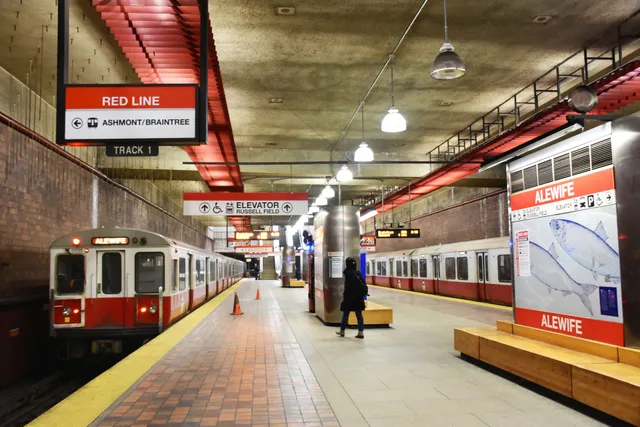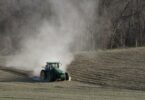
By Hannah Edelheit
Boston University News Service
A new tunnel to provide access to “hi-rail” work vehicles along the MBTA’s Red Line is raising environmental concerns, particularly about asbestos in the soil.
The tunnel is slated to be built near Alewife Station and Russell Field in Cambridge. It would enable hi-rail vehicles – work trucks equipped with a hydraulic set of train wheels in addition to rubber tires allowing them to operate on railways and surface streets – to have another entry point to the Red Line. The nearest entry point now is at Charles/MGH, six stops from Alewife, which means repair work nearer to Alewife often takes longer.
A June test of the surrounding soil found asbestos fibers in 56 of the 148 samples in the first six feet of the soil at the site. Asbestos was not found in the “deeper natural soil,” said Brian Miller, an environmental engineer and licensed site professional consultant at CDW, which is a civil and environmental engineering consulting firm.
Asbestos fibers are a known carcinogen.
“Forty-nine of 56 detections were below 1 percent asbestos, and the highest detection was 1.92 percent. We did not observe visual asbestos in any of the samples,” Miller said, adding the MBTA will have eight dust monitor locations to track the levels of asbestos in the air.
The Massachusetts Department of Labor clean air criteria’s allowable limit is 0.01 fibers per cubic centimeter of asbestos, and this project’s limit is .007 asbestos fibers per cubic centimeter, Miller said.
Additional measures are also being taken to reduce possible exposure to asbestos, including misting stations to wet the ground and immediate removal of the soil in trucks, Miller said.
“Mitigation and monitoring under the non-traditional work plan would start during the sheet pile installation and be carried out through shallow soil excavation for any areas that are not excavated to the full six feet. A temporary clean cap will be placed over asbestos soils as a working surface for equipment,” Miller said.
The MBTA held a public meeting September 30 to go over a draft release abatement measure, better known as a RAM plan, to discuss the soil removal process. The deadline for public comment on the plan is October 30.
The land is currently owned by IQHQ, and the project is included in the MBTA’s $9.6 billion capital plan. The $32.9 million project has a proposed June 2026 start date and a March 2028 end date. The site used to be home to WR Grace, a chemical business.
Rep. Steve Owens of Watertown, whose district includes parts of Cambridge, agreed there is a need for the tunnel but said the asbestos removal process needs to be resolved.
“I think pretty much everybody will agree that it’s important to improve the performance of the Red Line, and particularly how quickly maintenance can be done on there,” Owens said.
Many members of the public expressed concerns about construction impact in the neighborhood.
“To me a slide that was missing from the presentation is the impact on the neighborhood,” said Freedom Baird, a Cambridge resident. “For example, how does a project like this affect commuters? What about the noise impact, the vibration impact, dust? I’d like to hear all of those items addressed.”
Other members of the public raised concerns about the asbestos.
“We like the idea of having this access nearby, but we’re questioning some of what went into choosing this site, which is highly contaminated, but primarily our concern is asbestos,” Cambridge resident Mike Nakagawa said.
This story originally appeared in the CommonWealth Beacon.








I hope the T will satisfactorily address the neighborhood’s concerns. Developers recently completed asbestos removal (and cutting off a few stories) at the old courthouse/jail in the middle of an east Cambridge neighborhood. It wasn’t soil removal, but the community managed to endure the lengthy disruption. The Red Line, which now has virtually no slow zones, needs all the help it can get to maintain the system.